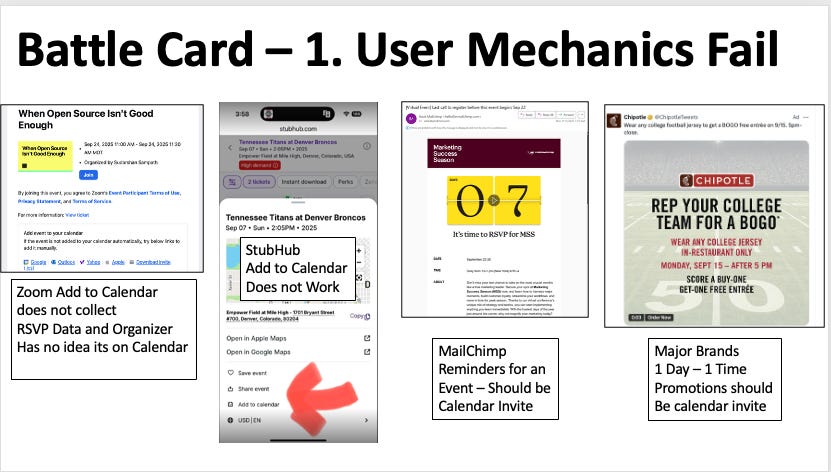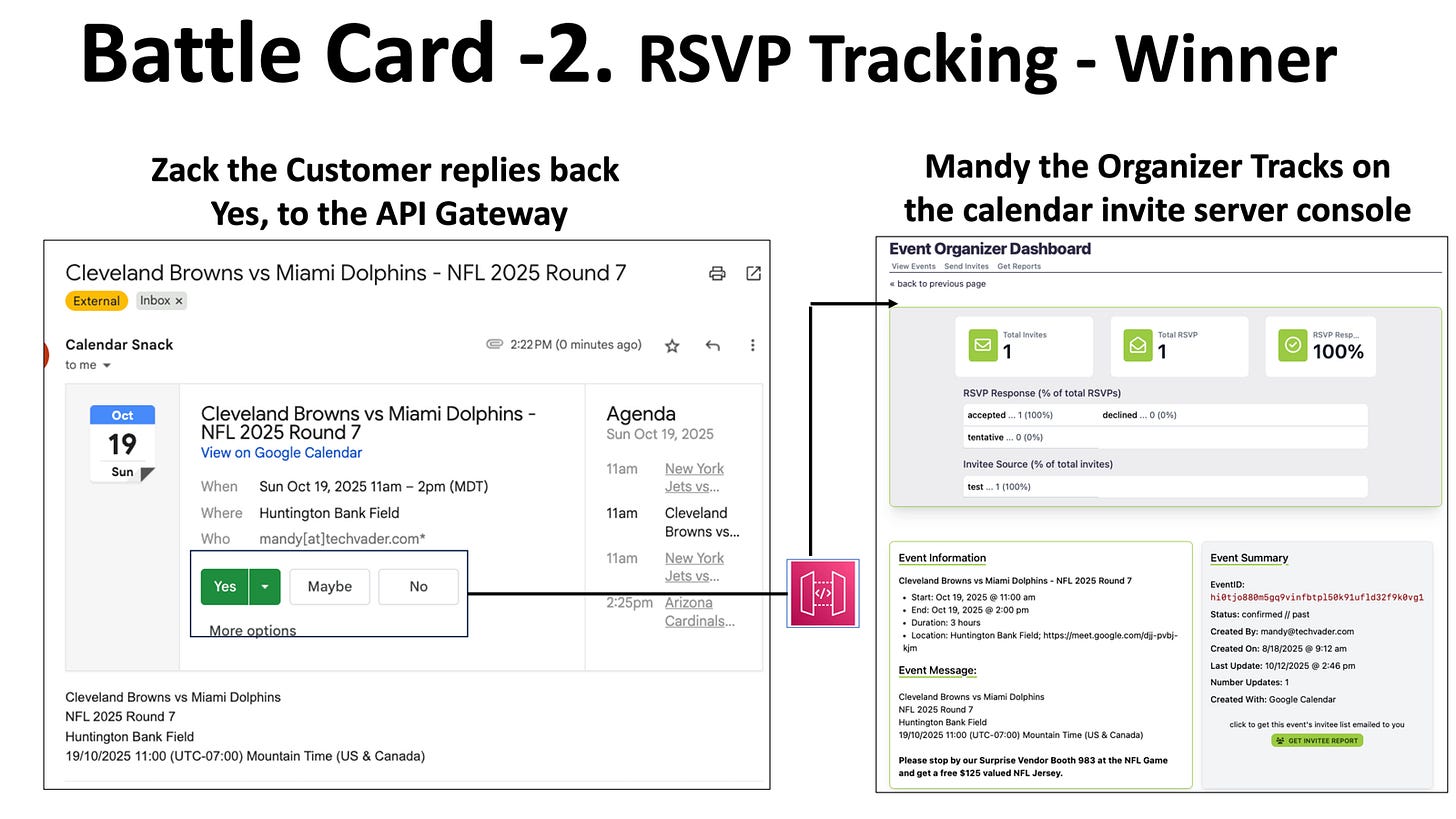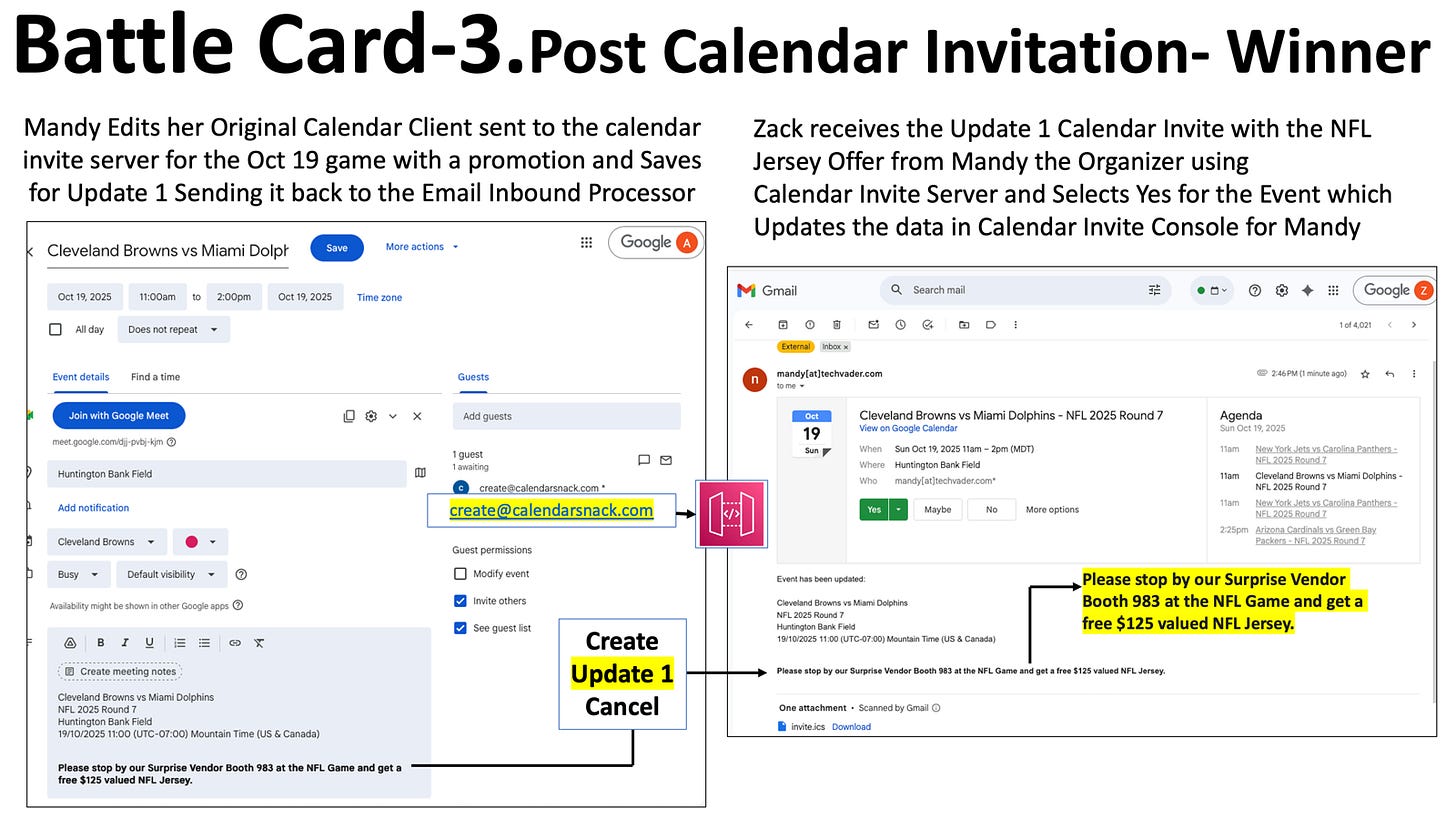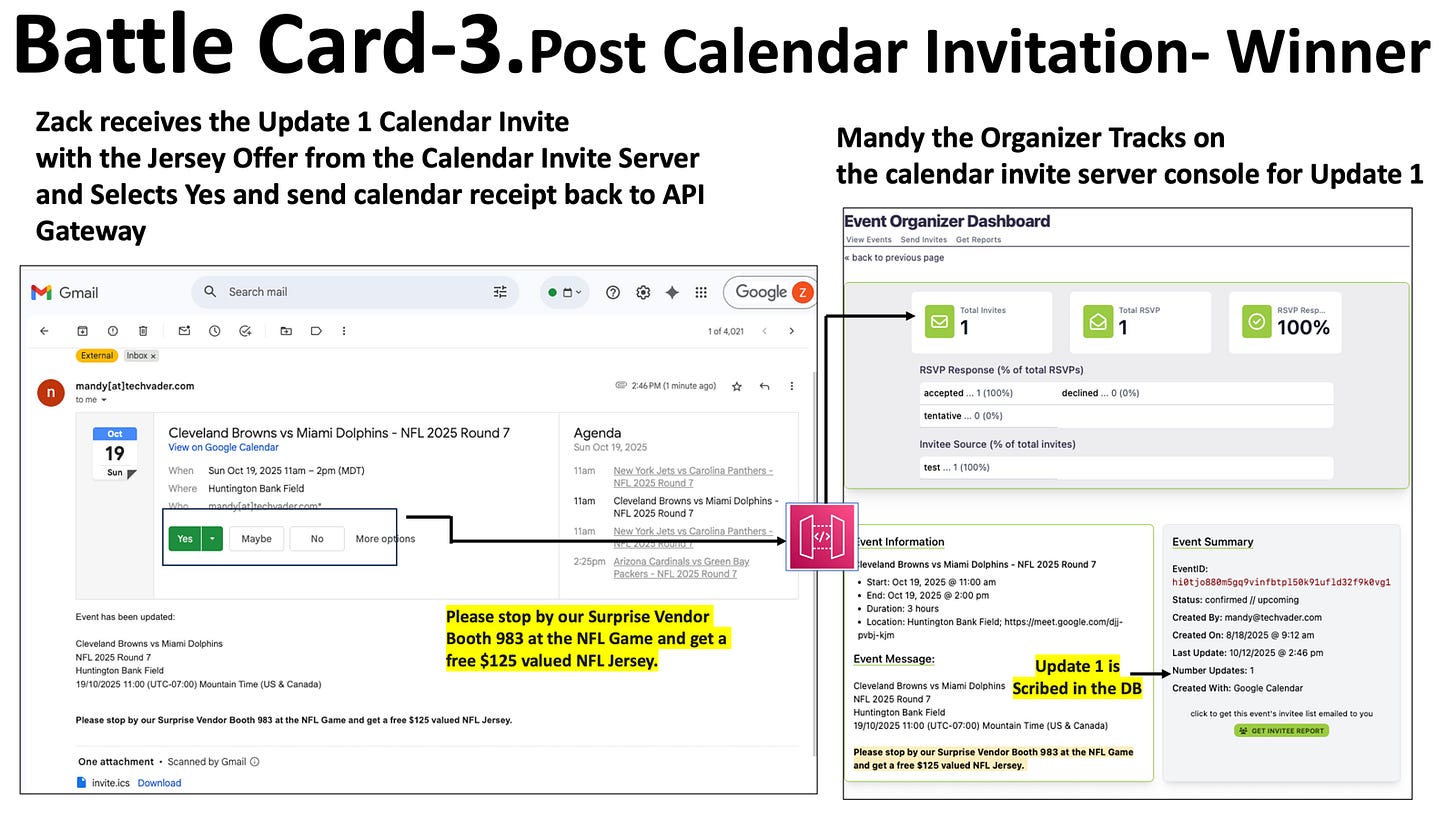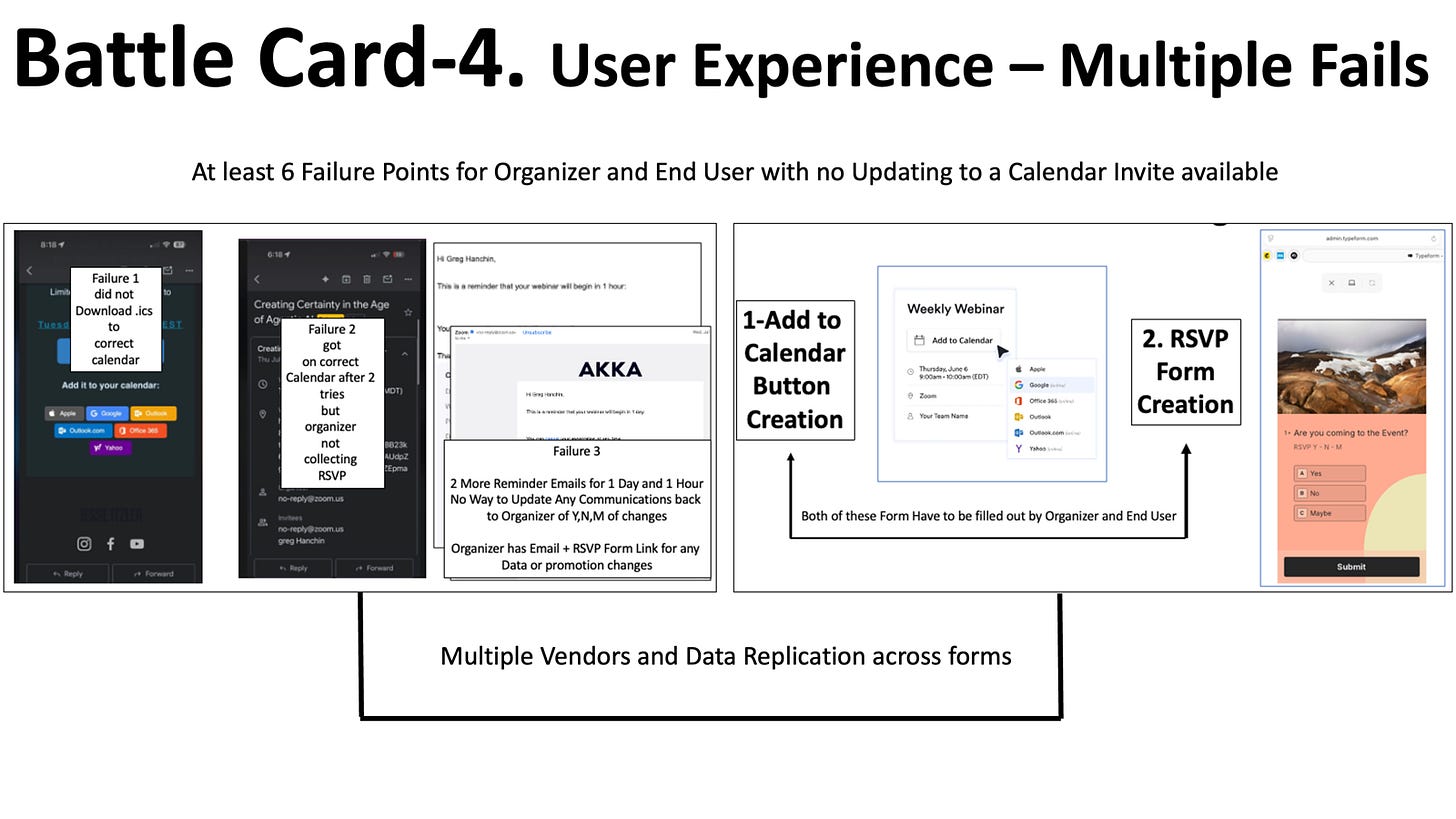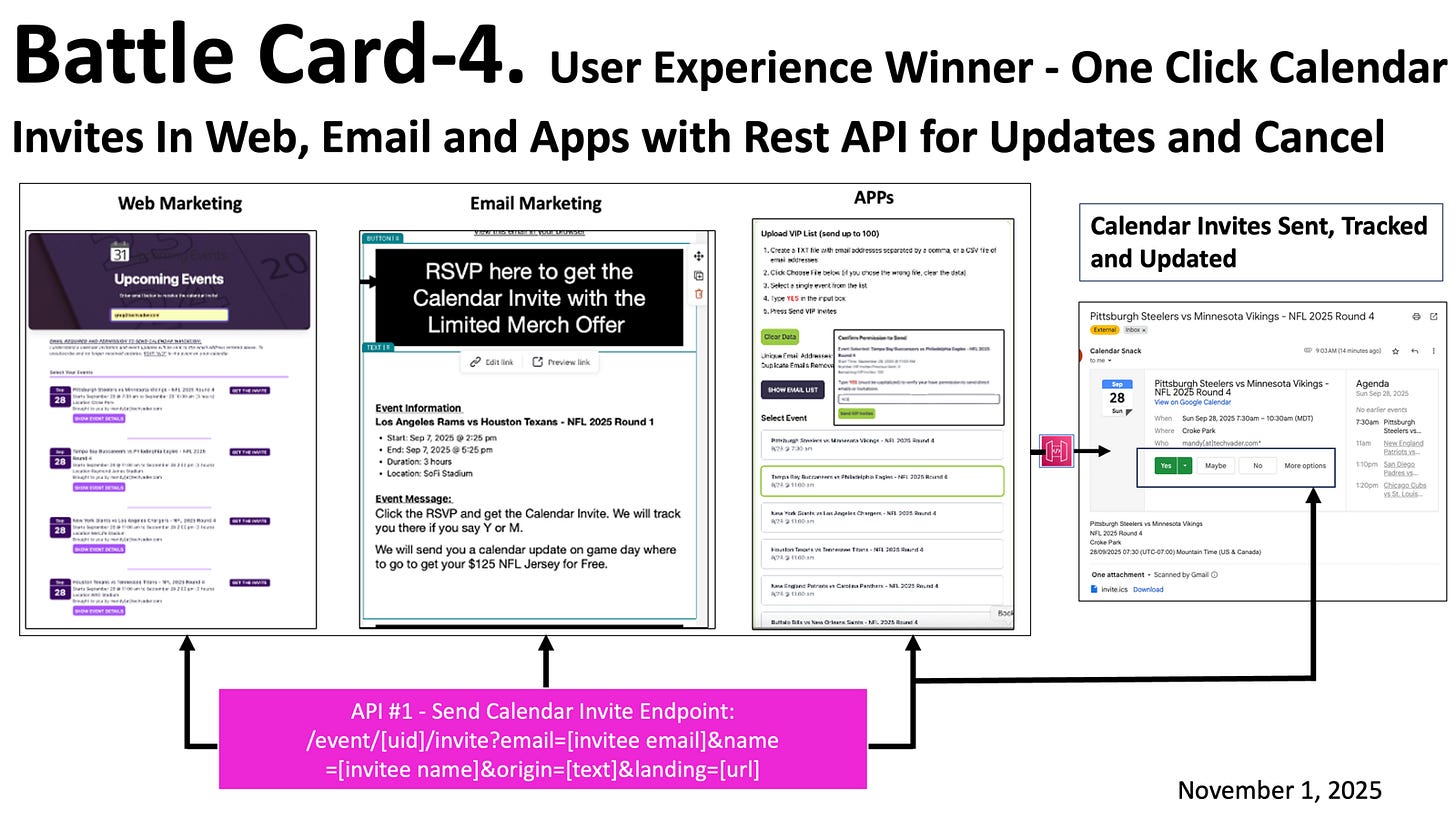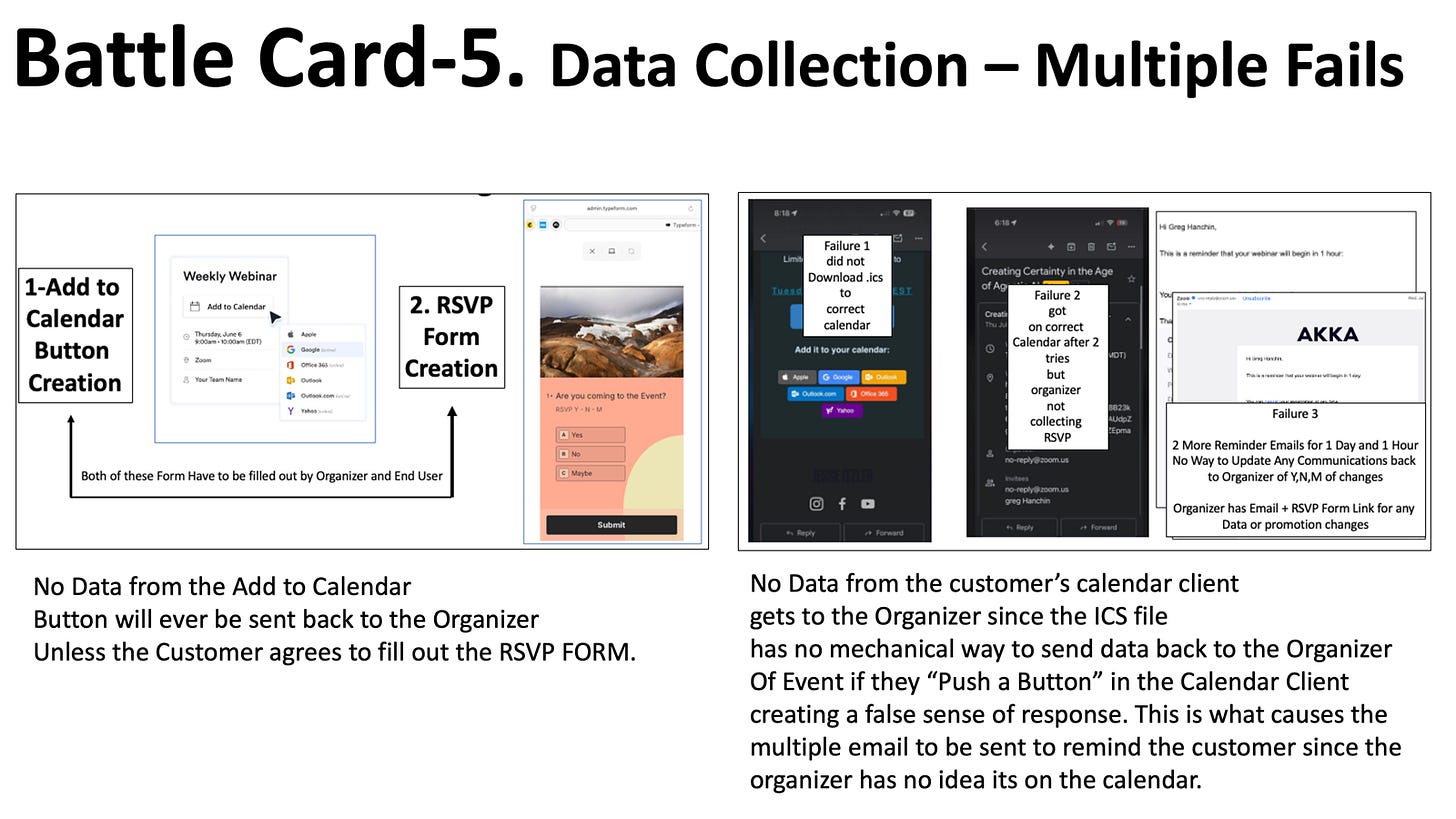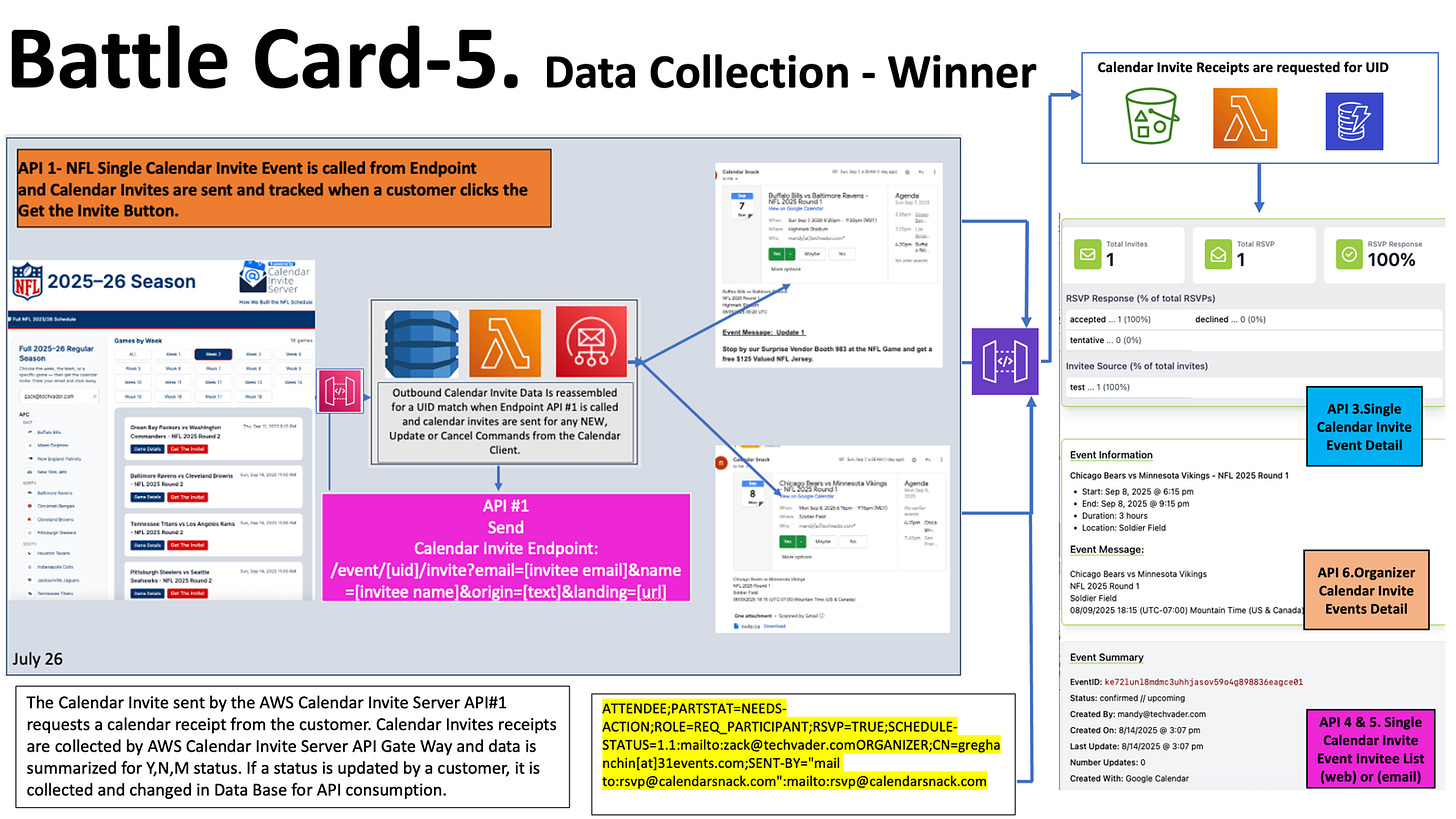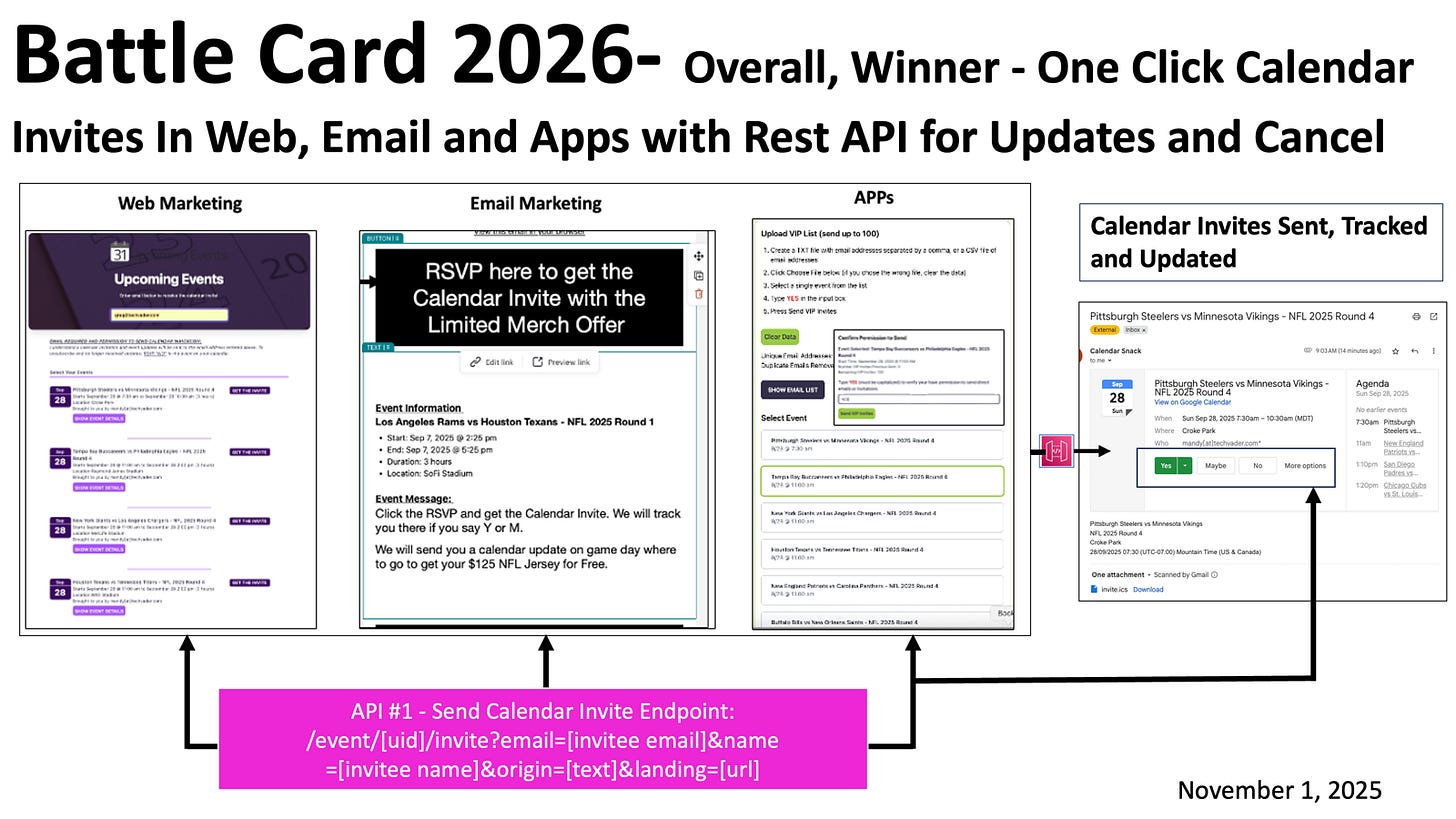1- User Mechanics
Legacy Methods (Add to Calendar / RSVP Forms)- User downloads a static .ics file that matches the calendar client they use and fills out a separate web form for RSVP response. The connection ends after this initial action and there is no validation that it worked. It’s outdated and does not collect RSVP data from the Users Calendar Client.
Calendar Invite Server (CIS) Advantage - Sends a direct, client-to-server calendar invitation, creating a persistent, updatable entry on the user’s native calendar. This establishes a direct communication channel, not just a static file download. This is based on the IETF way of sending, tracking and updating Calendar Invites.
2 - RSVP / Engagement Tracking
Legacy Methods (Add to Calendar / RSVP Forms) -There is no reliable tracking with the “Add to Calendar Buttons”. The Add to calendar buttons do not send Y, N, M back to the Organizer. No data is collected. There is no 1st Principle Data Collection to understand any user intent.
This requires a RSVP form as a separate work flow for the End User and Organizer to fill out to determine intent but does not guarantee the event is on the customers calendar. The Organizer and Digital Marketer has to attempt to tie together on the Web page or the Email Marketing Campaign for the End User.
Calendar Invite Server (CIS) Advantage - Natively tracks calendar client responses (Yes, No, Maybe) for each recipient, providing accurate, real-time engagement data until event is over in the Calendar Invite Server Dashboards.
3- Post Calendar Invitation - Communication
Legacy Methods (Add to Calendar / RSVP Forms) - Requires sending separate email campaigns for updates, which can be ignored or lost. No direct way to modify the calendar event.
Calendar Invite Server (CIS) Advantage - Leverages the Native Client Editing innovation (Inbound, Outbound, Update Processors), allowing organizers to create new events, push updates to the original calendar invite, add promotions, or add logistical changes directly to the calendar event of engaged attendees, bypassing noisy email inboxes for updating the event.
The Promotional NFL Offer data is Updated in the Calendar Invite Server and an Updated Calendar Invite is recreated from the DB and sent to those that have said Y or M to the first calendar invite by Mandy the Organizer. The Updated RSVP is collected in the Calendar Invite Console from any customers that respond back from their Calendar Clients. None of this can be done with the RSVP Button + RSVP Form.
4. User Experience
Legacy Methods (Add to Calendar / RSVP Forms)-Multi-step, disjointed process. The user must download a file and import it, or navigate away to fill out a RSVP form.
Calendar Invite Server (CIS) Advantage - Seamless one-click action for sending a calendar invite that fulfills the strategic goal of ‘getting on the calendar first, ‘establishing a commitment before asking for further registration details across email, web and app channels.
5 - Data Collection
Legacy Methods (Add to Calendar / RSVP Forms) -Limited to form submissions and Registration Clumsiness. No get on calendar first with calendar invite and then update calendar invite to encourage attendance.
No insight into whether the event was actually added to customers calendar or how the user interacts with it on their calendar and an un certainlity if the RSVP Form is really important. This causes a blind spot for the Organizer. 1- Did they get the Add to Calendar on Calendar? 2 - If the RSVP form did not work should I send it again in a separate email?
Calendar Invite Server (CIS) Advantage - Creates a persistent data connection to the customers calendar client, collecting calendar receipts and tracking response changes over the event’s lifecycle of Customer and Organizer interaction.
Conclusion: From Calendar Chaos to Simple Clarity
So, the next time you hesitate before clicking an “Add to Calendar” button, remember that your frustration is valid—and unnecessary.
For years, we’ve been told that this broken experience is just how things are, but it’s the direct result of a clumsy technical workaround for a problem the internet had already solved.
By replacing this system with an intelligent calendar invite server, we move from chaos to clarity. The unreliable, multi-step process is replaced with an elegant, single-click solution.
This technology doesn’t reinvent the wheel; it simply restores the reliability and intended elegance of event invitations, creating a seamless and trustworthy experience for everyone involved.



